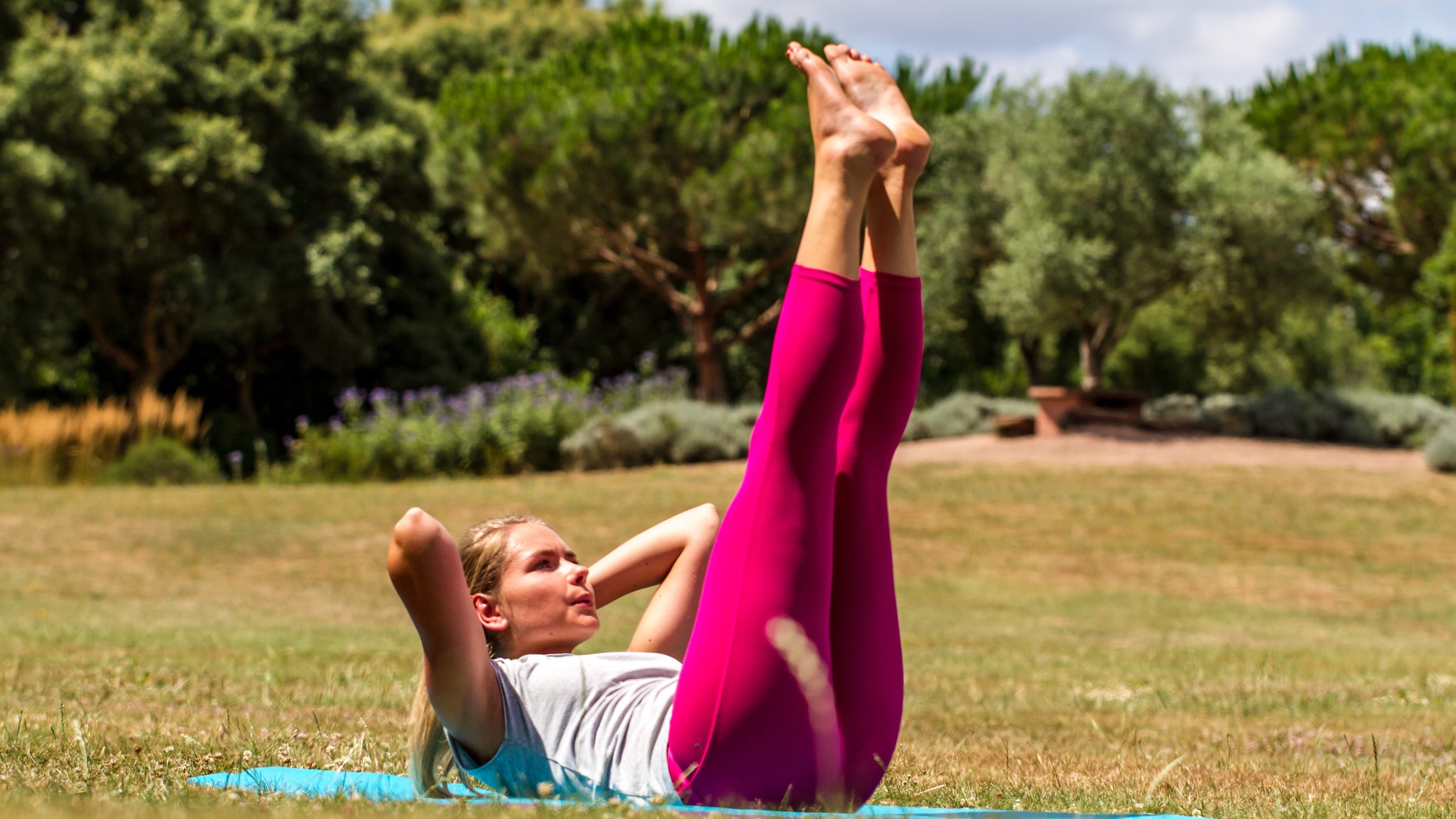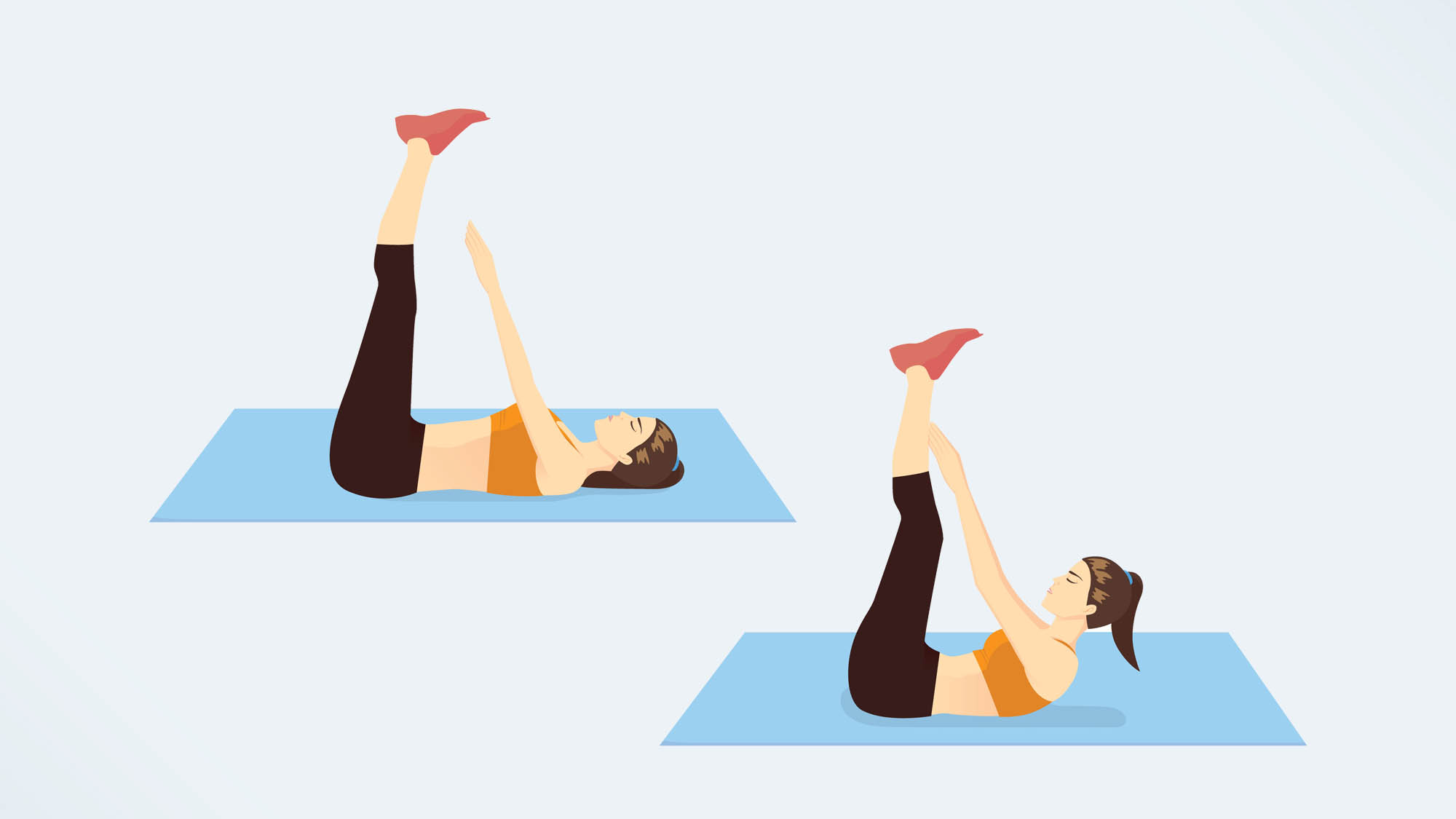I did vertical leg crunches every day — and my abs felt the results
Here’s how to master this simple abdominal exercise

If you’re bored of crunches and looking for a new way to up the intensity of your next ab workout, we’ve got a simple fix — raise your legs to the ceiling. Vertical leg crunches are a crunch variation that helps you target more of the muscles in your mid-section.
While the basic crunch targets the rectus abdominis, or the outer six-pack muscles, the vertical leg crunch also targets the deeper transverse abdominal muscles, the internal and external obliques, and muscles in the lower back.
To find out more about the effects of the vertical leg crunch, I unrolled one of the best yoga mats, and added it to my workout routine every day for a week. The simple-looking move requires just your bodyweight, and can be done from just about anywhere.
As always, what works for me might not be right for you and your body. If you’re new to the exercise, you’ve suffered a back injury, or you’re returning to fitness following some time off, it’s a good idea to check your form with a personal trainer before increasing the number of reps.
How to do a vertical leg crunch
Ready to get started? The key to this exercise is moving with the correct form. Here’s how to do a vertical leg crunch with the correct form:

- Start by lying on your back. Place your hands gently behind your head.
- Raise your legs together, lifting them to the ceiling, with a slight bend in your knee. Ensure your lower back is pressed into the floor, and that there isn’t any space between your back and the mat.
- Squeeze your core, thinking about sucking your belly button into your spine.
- Curl your head, neck, and shoulder blades up off the mat, keeping your legs straight. Don’t let them sway from side to side.
- Pause and hold the movement when your shoulders are lifted off the floor.
- Lower your upper body back to the mat, moving slowly and with control.
- Keep your legs lifted, don’t let them crash back to the mat.
- That’s one rep.
The key to this exercise is moving slowly and with control — be sure to think about squeezing your abs throughout the exercise to keep them engaged.
I did vertical leg crunches every day for a week — here’s what happened
As a fitness editor, I’m no stranger to a workout challenge — here on the Tom’s Guide fitness desk, we frequently try all manner of weird and wonderful week-long challenges to learn more about the exercise. That said, as reminder, you shouldn’t work your abs every day of the week — your body needs time to rest and recover between workouts.
Sign up to get the BEST of Tom's Guide direct to your inbox.
Get instant access to breaking news, the hottest reviews, great deals and helpful tips.
Here’s what I learned from a week of vertical leg crunches:
They’re a lot harder than normal crunches
Although the only difference between this and a basic crunch is lifting your legs, it only took me a few reps on the first day of this challenge to realize this variation was a lot more challenging than normal crunches. On day one I opted for 50 reps, broken into five sets of 10 reps. When I finished, I could feel my core had worked hard.
By the end of the week, I’d challenged myself to increase the intensity of the move by adding reps to my daily workout, but also by changing my arm position. The move can be made harder by extending your arms towards your feet, trying to touch your toes at the top of each rep. On the final day I held one of the best adjustable dumbbells between my hands as I reached them towards my toes.
I had to focus on my form
As with a lot of these week-long challenges, I videoed my form and asked a personal trainer friend to take a look at how I was moving. I suffer from lower back pain after years of dealing with sciatica, so I was very conscious about keeping my back pressed into the mat as I moved, however, it turned out I needed to also focus on my legs.
Your legs swaying from side to side during the exercise is a sign you’re not engaging your core correctly. If you do struggle to keep your legs still, cross one leg over the other while crunching to help stabilize them.
It’s also important to ensure you’re not using momentum to pull your head forwards, as this can put a strain on your neck. Your hands should only be gently resting on your head and you should avoid pulling on your neck as you crunch. Keep your head and neck relaxed, and ensure the move is coming from your core.
I’ll be adding them to my workouts in the future
What did a week of vertical leg crunches teach me about this move? It’s great at working my core, and I’ll definitely be adding it to my ab workouts in the future. As with a lot of these challenges, I found that by doing the move before heading out for a run, I was better able to engage my core on the move, keeping my torso upright, and running with better form. My abs ached, and I could tell I’d worked hard.
Of course, there were no visible changes to my body, although that wasn’t my goal — strong abs help you walk with better posture, protect your spine, lift heavier weights, and run faster.
That said, if visible abs are your goal, no amount of crunches can make that happen. Instead, you’ll need to focus on your body fat percentage, which can be impacted by your diet, stress levels, and hormones, as well as exercise. Here’s how to calculate your body fat percentage, and why it matters.
I’ll be keeping vertical leg crunches in my ab workouts going forward, but I am relieved I don’t have to do another 50 tomorrow.
More from Tom's Guide

Jane McGuire is Tom's Guide's Fitness editor, which means she looks after everything fitness related - from running gear to yoga mats. An avid runner, Jane has tested and reviewed fitness products for the past five years, so knows what to look for when finding a good running watch or a pair of shorts with pockets big enough for your smartphone. When she's not pounding the pavements, you'll find Jane striding round the Surrey Hills, taking far too many photos of her puppy.
